How to Grow a Cashew Tree | Growing Cashew Nuts
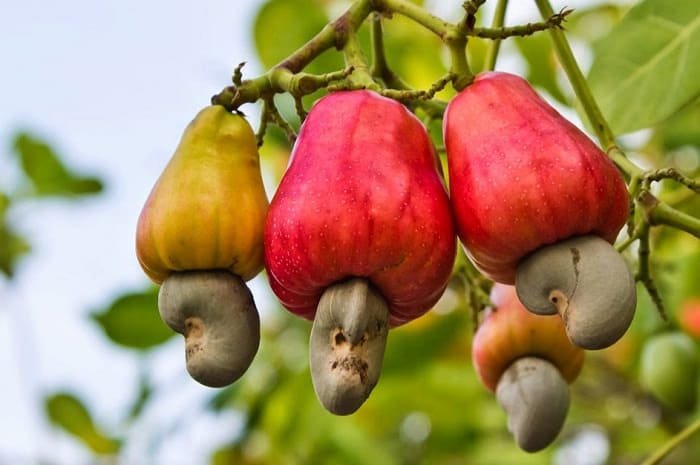
Cashew nuts are easy to grow, but it requires a more specific environment and growing conditions. If you can provide that environment, then you can plant a cashew tree and enjoy the nuts and fresh fruits that are known as cashew apple.
Other names — Maranon, Noix d’anacarde, Caju, Kaju, Mundiri, Kazu, Pajuil, Paringi mavu
Cashew Nuts Tree Growing Information
Cashew originates from the Caribbean Islands and the North East of Brazil. But today it is grown in several other tropical parts of the world, mostly in Africa, India, and Southeast Asia. Cashew trees can grow up to 6-12 meters (20-40 feet) high. Its evergreen leaves are oval, leathery, and dark green.
As for the fruits of this tree, do not be fooled by appearances. The cashew apple is oval-shaped, like a bell pepper–yellow, orange, or red in color is a false fruit (it is also edible). The real fruit, more discreet, is a nut attached to the end of the fake fruit. It is that which contains the edible kernel, which we call Cashew.
Cashew trees can be grown from seeds, air layering, and grafting.
To propagate it from seeds, you will need a matured unshelled nut (seed). These seeds are viable for up to 4 months. If you have collected the fresh seed from the tree, dry it in the sun for 3 days and soak it in water overnight before sowing. Sow the seeds in a good quality seed starting mix; the seeds will germinate anywhere from 4 days to 3 weeks.
Can You Grow Cashew Trees in Pots?
Yes, it is possible to grow a cashew nut tree in a pot. To do so, buy a well-grafted tree from a nearby nursery and plant it in a medium pot. Once it outgrows the current pot in a few years, transfer it into one or two sizes bigger pot.
Requirements for Growing Cashew Nuts Tree
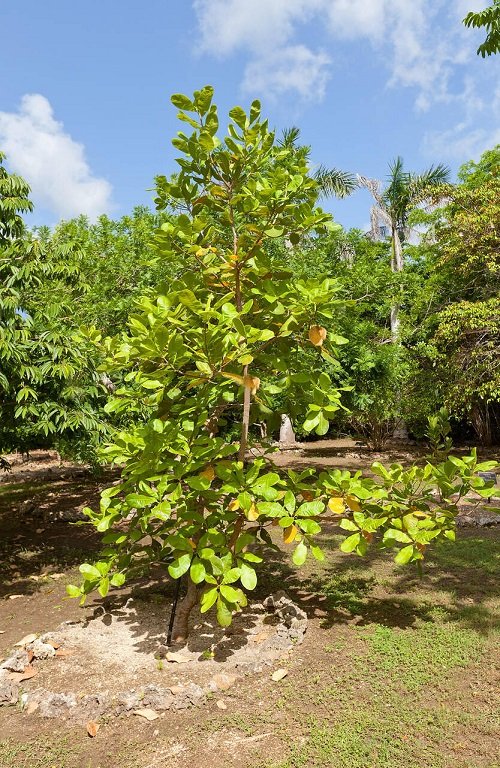
Position
Native to tropical regions, Cashew trees appreciate warm and humid climates. Ensure the tree receives a minimum of 6 hours of direct sunlight daily. Exposure to extended shade will inhibit fruit production and encourage pest infestation.
Soil
Cashew prefers a slightly acidic, well-draining loamy growing medium with a pH of 5.5 to 7. Never grow cashew trees in clay-rich soil, as it does not appreciate waterlogging at all. If growing in a container, ensure the medium is amended with plenty of perlite, vermiculite, sand, or birch chips to aid drainage.
Water
Cashew trees are moderately drought tolerant once established, but they produce more fruits if watered regularly. During the summer, water weekly or twice and deeply. Reduce or withhold watering during winter.
Overwatering can harm or even kill your cashew tree, so water only if the soil is dry and let the soil dry out between spells of watering.
Fertilizer
If growing a cashew tree in a pot needs regular application of fertilizer to thrive and produce fruits. Use a 10:5:5 blend for healthy plant growth. Alternatively, you can use a balanced liquid fertilizer every 4-5 weeks after diluting it to half of its strength.
Use slow-release fertilizer with N-P-K 8-3-9, according to the product instructions given on the packet, around the base of the tree every two to three months during the growing season. Also, apply compost or farm manure once a year, around 30 pounds (15 kg), on the surface of the soil around the base of a mature tree.
Cashew Tree Care
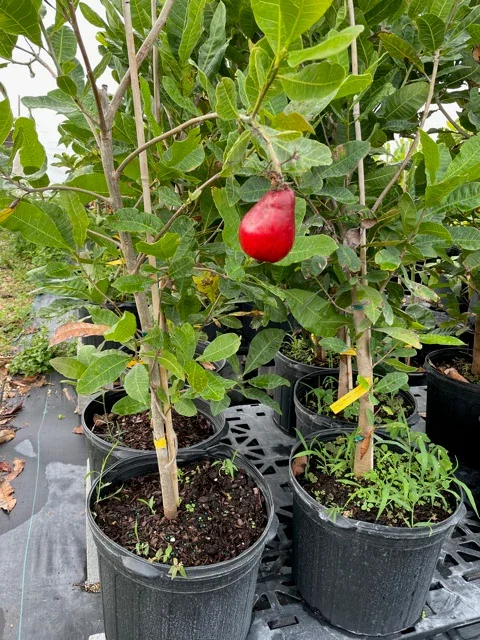
Pruning
Prune cashew trees regularly to remove weak, dead, and entangled branches and those that are infested with diseases or pests. Also, cut overcrowded branches to promote vigorous growth.
If you wish to create a canopy of a cashew tree, it is important to train it from a younger stage.
Mulching
Do mulching around your cashew tree with organic matter to prevent weeds and conserve moisture.
Pests and Diseases
The cashew tree is generally pest-free if it is in good health. Major pests that pose a serious threat include tea mosquito, stem and root borer, leaf Miner, and blossom Webber.
Keep a close eye on the leaves and blossoms, and take the necessary steps quickly when you spot pests or diseases.
Harvesting and Cashew Nut Processing
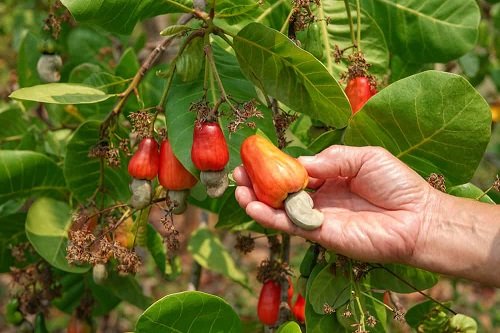
Harvest when cashew apples turn pink or red and cashew nut shells are gray. After harvesting, separate the cashew apple from the nut.
Cashew apples can be eaten raw or used in making juice. Unshelled cashew nuts can be stored for up to 2 years. Do not attempt to break the shell before roasting; the cashew shell contains very caustic oil that can burn skin.
When processing cashew nuts at home must wear gloves and safety glasses and take special care.
Cashew Nuts Growing Tips
- Sow fresh cashew seeds for germination, as they germinate easily.
- A tree grown from seeds take 3 to 5 years to produce its first fruits. Our recommendation is to buy a potted plant from a nursery. This way, you’ll not have to wait that long.
- Choose a location that is well protected from the wind.
- Cashew grows better when the temperature remains around 80 degrees Fahrenheit (25 C). However, they can withstand temperatures as low as 50 degrees Fahrenheit (10 C) and as high as 105 Fahrenheit (40.5 C) without any problem.
- Keep the area around the base of your cashew tree free from weeds, small shrubs, vines, and debris.
- Watch for sick or dead branches, and prune them if necessary.
Benefits of Cashew Nuts

One of the most delicious and healthiest nuts, cashews are an amazing source of nutrients, and not only the cashew nuts but their fruit is nutritious too. With several medicinal benefits, it is a rich source of vitamin C, five times more than an orange. It also contains higher amounts of calcium, iron, and vitamin B1, which is more than most fruits.

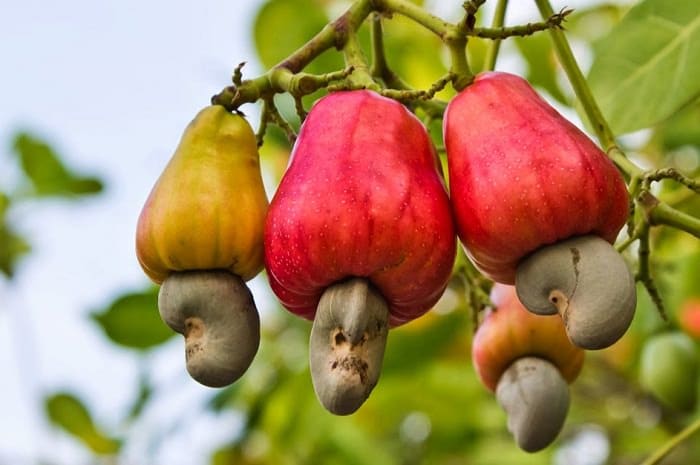


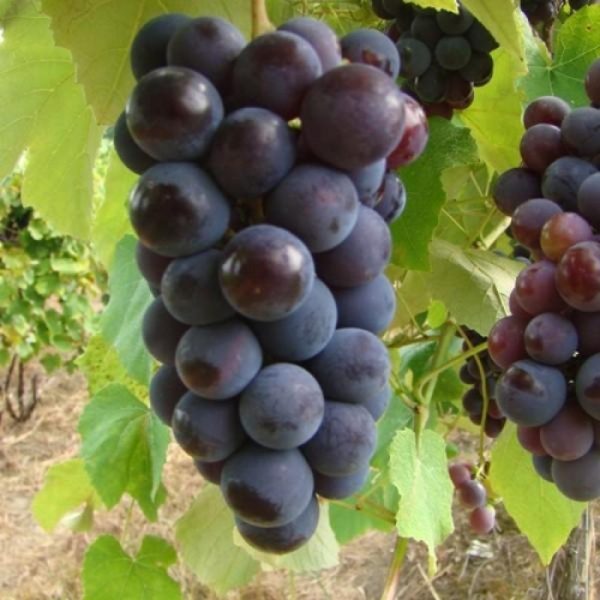



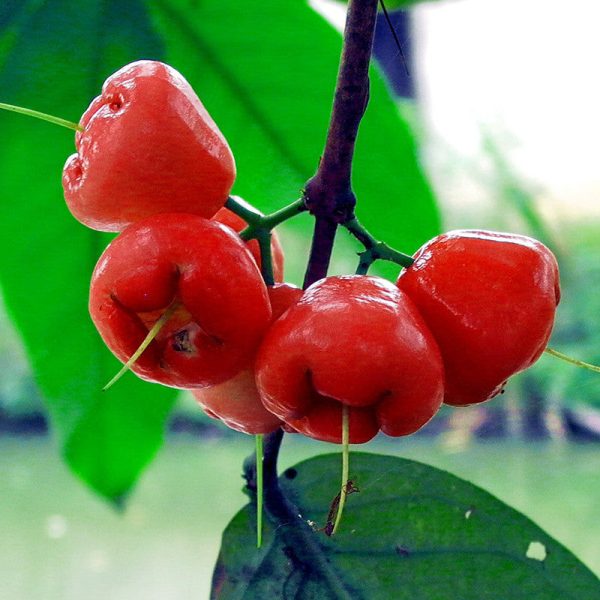





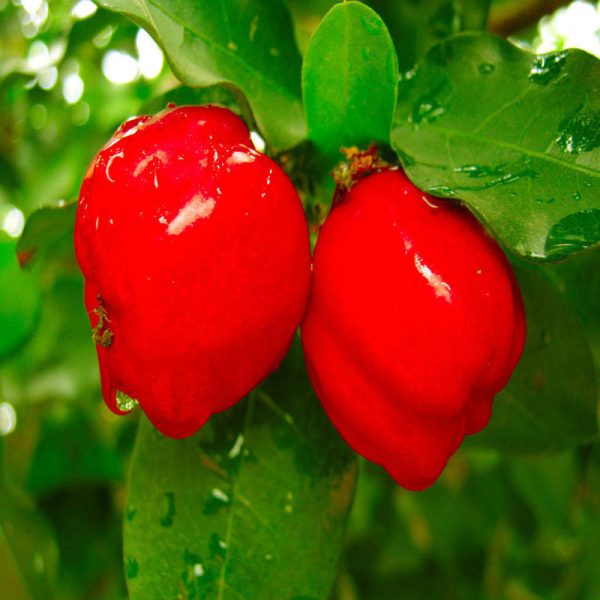

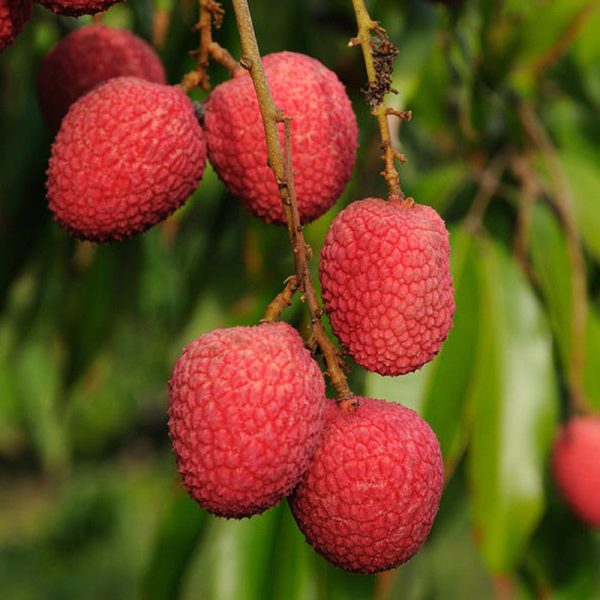
Reviews
There are no reviews yet.